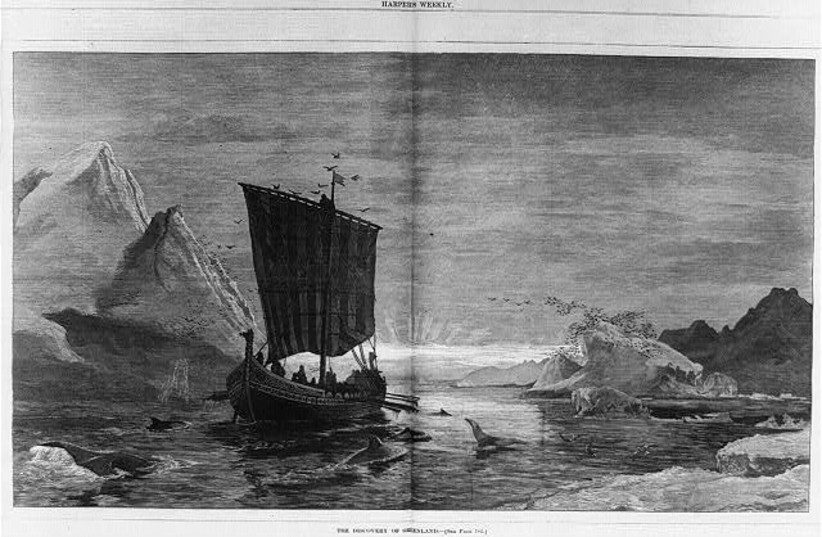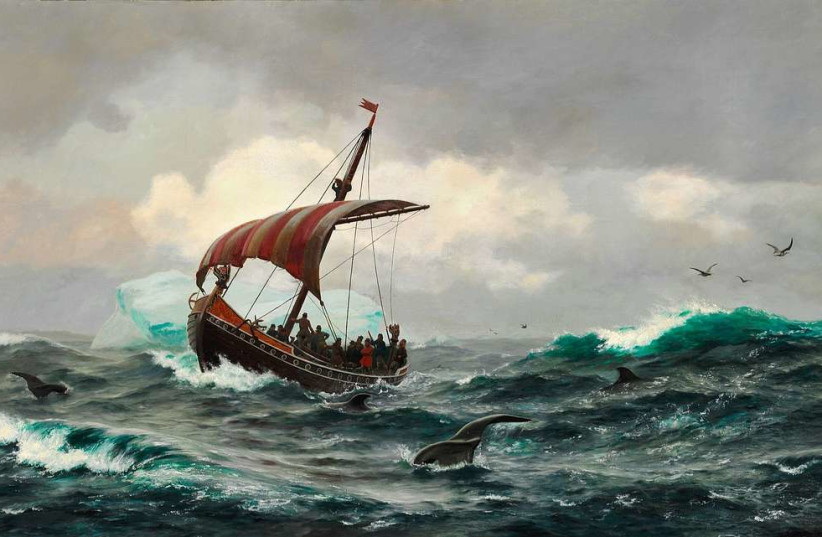Rising sea levels could have been what chased the Vikings off of Greenland, a new Harvard University study has revealed.
The findings of this study were published in the peer-reviewed academic journal Proceedings of the National Academy of Sciences (PNAS).
The research seems to have solved a longstanding archaeological mystery regarding the disappearance of the Vikings from their most successful Greenland colony.
In addition, it may also be a stark warning for the modern era, when fears of floods and rising sea levels due to climate change are widespread.
The history of the Vikings in Greenland
For centuries, the large icy island of Greenland was mainly inhabited by indigenous Inuit peoples believed to have originated in the Americas. In the 10th Century CE, however, Norse sailors would accidentally discover a seemingly uninhabited island – in actuality, there were still inhabitants on the island's northwest, but the Norse settled in the South. The first settlement was supposedly established by Erik the Red, who, according to medieval accounts, called the island Greenland to encourage people to move there.

Of course, Greenland was hardly a "green land," and at any rate, this story has hardly been confirmed. This is because the Norse didn't usually write, rather details surrounding them and their culture were documented by foreign chroniclers and writers, either at the time or in later years based on traditional accounts.
It should be noted that the term "Norse" refers to the cultural, linguistic and ethnic group from the Scandinavian countries now known as Denmark, Norway and Sweden. These people would spread their influence into neighboring territories such as modern-day Finland, the Baltics, Russia, France via Normandy, Britain, Ireland, Iceland, Greenland and even part of modern-day Canada. At its greatest and most organized extent, this would manifest in the great North Sea Empire.
All of this was part of the Viking Age. The origin of the term "Viking" is hotly disputed but by the Middle Ages, it specifically was meant to refer to Scandinavian pirates or raiders.
Starting from the late 700s, usually either a 789 Viking attack on Dorset or more commonly a 794 raid on the Northumbrian monastery of Lindisfarne, the Vikings and subsequent conquests, colonization and trade would shape the history of northern Europe. This would result in the creation of a maritime network connecting everything from Sweden to Iceland, Greenland and Canada – which helps explain archaeological findings such as ivory from Greenland being found in Kyiv.
Its end is often linked to the 1066 Battle of Hastings when the Norse lost control of England, the geographic center of this maritime network.
Despite this, the Norse presence in Greenland hung on, lasting until the 1400s. They were centered in two main settlements, the Eastern Settlement and the Western Settlement. Of the two, the former was considered larger and more successful and it is known to have lasted longer than its western counterpart.
However, it then came to an abrupt end, with the last evidence of humans in the settlement being dated to sometime in the mid-15th century.
Why did the Vikings abandon their best settlement in Greenland?
Several theories have been put forth over the years as to why the Vikings disappeared from Greenland. These range from the Black Death, soil erosion and conflict with the other Greenlandic peoples.
At one point, many researchers looked for a climate-based explanation, with experts considering a severe shift in the temperature bringing about harsh cold causing the settlement's demise. This would be in line with a severe cold period in the North Atlantic between the 14th and 19th centuries known as the Little Ice Age.
However, this theory has been the subject of debate, with some scientists noting that temperatures in Greenland likely didn't fluctuate much and noted that those prior studies weren't done in Greenland itself.
In 2022, a study published in the peer-reviewed academic journal Science Advances suggested that drought was possibly the reason for the settlement's end, based on analyses of the soil and nearby plant life.
But this new study has given a new hypothesis: Rising sea levels and severe pervasive flooding.
How could rising sea levels and floods happen in Greenland during the Little Ice Age?
There is some evidence for this. For example, some prior archaeological and geophysical studies on sediment and ruins showed evidence of rising sea levels both during the time the Vikings still inhabited the settlement and after it was abandoned. There is also some dietary evidence, with studies indicating that at a certain point, the Viking diet stopped being mainly focused on livestock and instead on marine animals such as fish and seals, which could possibly be a sign that land became less arable – something that could be caused by rising sea levels, though is also explainable as a result of overgrazing, poor temperatures or drought.
This at first glance seems to be problematic. After all, the occurrence of the Little Ice Age isn't in dispute. Its existence has been verified repeatedly by both contemporary records and modern scientific analysis. However, the Little Ice Age should have been characterized by lower sea levels due to the seawater being frozen and contributing to ice, specifically in this case to the Greenland Ice Sheet.
But this study argues that this didn't happen in Greenland. Rather, the fact that temperatures were low due to the Little Ice Age and seawater being frozen into ice ended up raising the sea level.
How is this even remotely physically possible? Well, in this case, it's because of gravity.
As the ice grows, it can cause what was known as crustal subsidence. To put that in simpler terms, the land was basically sinking due to the sheer weight of the continental ice sheets – ice sheets that were only growing larger due to the Little Ice Age.
This would only be evident in areas near the ice shelfs – and unfortunately for the Vikings, the Eastern Settlement was located near two of them, the Laurentide Ice Sheet and the Greenland Ice Sheet.
In other words, this means that during the Little Ice Age, the ice became so immensely heavy that it basically pushed the ground down. But that doesn't mean the sea levels "rose," technically, because it would simply mean the land moved lower. What does mean the sea levels rose was that the ice sheets continued to grow and therefore pulled more water towards themselves. And it was a combination of these two factors that ultimately led to what the Harvard researchers concluded was a 3.3 meter rise in sea level throughout the history of the Viking settlement on Greenland.
To put that in perspective, that's two to three times more than the rate of the rising sea levels in the 20th century.
And with these rising sea levels came an increase in flooding, which only made life even more difficult. In fact, the researchers noted that a total of 204 square kilometers of land would have flooded.

All of this was verified by simulating sea level changes in a model based on the information already known.
Of course, this doesn't disprove previous theories. A lack of resources, social turmoil and clashes with the other Greenlandic peoples are still possible factors that could have resulted in the abandonment of the settlement.
But the study does add a new watery dimension never before considered in this archaeological mystery. It is very possible that it was a combination of all these factors that reinforced a feeling of vulnerability and a conclusion that the settlement was ultimately unsustainable.
